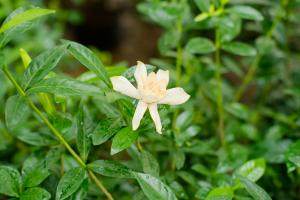How Far Apart Should Cherry Trees Be Planted?
Cherry trees are a popular choice among gardeners and homeowners as they add aesthetic appeal to the landscape and produce delicious fruits. However, planting cherry trees is not as simple as digging a hole and placing the sapling in it. The spacing between cherry trees plays a significant role in their growth and yield. In this article, we will explore the optimal distance at which cherry trees should be planted.
Factors Affecting the Spacing of Cherry Trees
Before we get into the details of the proper spacing of cherry trees, it's essential to understand the factors that influence it. The spacing of cherry trees can impact the growth, yield, and disease resistance of the trees. Here are the key factors to consider:
Variety of Cherry Tree
The variety of cherry tree determines the mature size of the tree, which affects the spacing. For instance, dwarf cultivars of cherry trees require less space than standard-sized trees.
Soil Type
The soil type is another critical factor as it impacts the water and nutrient availability to the tree. Soil with high organic matter and good drainage allows the roots to grow deeper, and the trees need less space.
Climatic Conditions
The climatic conditions influence the timing of cherry tree blooming and fruiting. Trees that bloom and fruit earlier require more space to prevent overcrowding and promote air circulation.
Recommended Spacing for Cherry Trees
Now that we know the factors influencing the spacing of cherry trees let's dive into the optimal spacing. The standard distance for planting cherry trees is 20 to 25 feet apart in each row. This spacing allows the trees to grow adequately and facilitates ease of maintenance and harvesting. However, dwarf cultivars can be planted as close as ten feet apart, while semi-dwarf cultivars require at least 15 feet spacing.
The spacing between rows should be sufficient to allow a tractor to pass between them. The standard distance between rows is 25 to 30 feet, but it can be altered based on your preferences and gardening area. Increasing the spacing between rows allows more sunlight and airflow, reducing the risk of fungal diseases.
Conclusion
Cherry trees add beauty and functionality to any landscape, but proper spacing is crucial to their growth and yield. Consider the variety of cherry tree, soil type, and climatic conditions before deciding on the inter-tree spacing. Standard-sized cherry trees should be planted 20 to 25 feet apart, while the spacing for dwarf and semi-dwarf cultivars should be reduced. Proper spacing and tillage reduce disease pressure, promote pollination, and improve tree growth, leading to increased yields and more delicious cherries.

 how many times do yo...
how many times do yo... how many planted tre...
how many planted tre... how many pine trees ...
how many pine trees ... how many pecan trees...
how many pecan trees... how many plants comp...
how many plants comp... how many plants can ...
how many plants can ... how many plants and ...
how many plants and ... how many pepper plan...
how many pepper plan...






























